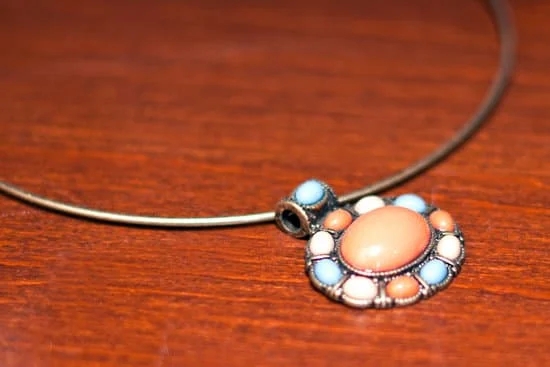The history of Indian jewelry dates back thousands of years and holds a significant cultural and artistic value. From ancient times to the present day, Indian jewelry has been an integral part of the country’s rich heritage. The intricate craftsmanship, use of precious gemstones, and diverse styles make Indian jewelry a unique art form that has captivated people around the world.
The art of jewelry making in India can be traced back to pre-historic times and has evolved over the centuries, reflecting the influence of various civilizations and cultural exchanges. From the ancient Indus Valley Civilization to the Mughal era, Indian jewelry has witnessed a remarkable journey, embodying different meanings and purposes through each period.
The evolution of Indian jewelry is not only a testament to its aesthetic appeal but also reflects the social, religious, and economic significance it holds within Indian society. This article will delve into the historical roots of Indian jewelry, exploring its cultural significance from ancient times to contemporary styles, as well as its impact on global fashion trends.
Additionally, it will shed light on regional variations in techniques and materials used in crafting Indian jewelry, highlighting its diverse and enduring legacy.
Ancient Indian Jewelry
The history of Indian jewelry dates back thousands of years, with evidence of adornment found in the pre-historic era. From simple beads and shells to more elaborate ornaments made from copper and bronze, the ancient Indians displayed a keen sense of aesthetics and craftsmanship. The use of jewelry was not only for beautification but also held cultural, religious, and social significance.
During the time of the Indus Valley Civilization, which existed around 3300-1300 BCE, jewelry played a significant role in the lives of its people. Excavations at sites such as Mohenjo-Daro and Harappa have unearthed a treasure trove of intricate jewelry pieces, including necklaces, bangles, earrings, and hair ornaments. These artifacts showcased advanced metalworking techniques, such as soldering and filigree work, indicating a high level of skill and artistry among the ancient Indian artisans.
The adornment worn by individuals during this era also reflected their social status and wealth. Elaborate headdresses adorned with precious metals and gemstones were commonly worn by royalty and elites, while commoners enjoyed simpler yet still beautifully crafted pieces made from materials like clay, shells, or copper. The ancient Indian jewelry not only serves as a testament to the exceptional craftsmanship of its creators but also offers valuable insights into the cultural practices and beliefs of that time.
Cultural Significance of Indian Jewelry
Indian jewelry has a rich history that dates back to ancient times, with evidence of its existence from the pre-historic period to the flourishing Indus Valley Civilization. Throughout the Vedic period and into the Mughal era, Indian jewelry played a significant role in cultural and religious practices, reflecting the social and economic status of individuals as well as serving as symbols of power and wealth.
During the Vedic period, jewelry was not only worn for adornment but also held spiritual significance. It was believed that certain gemstones possessed protective qualities and wearing them could bring good fortune and ward off evil. As society progressed into the Mughal era, Indian jewelry became more intricate and elaborate, representing opulence and status. The Mughals were known for their love of precious gems and intricate designs, which greatly influenced the evolution of Indian jewelry.
The cultural significance of Indian jewelry extends beyond mere ornamentation; it serves as a means of expressing heritage, traditions, and beliefs. From intricately crafted gold necklaces to ornate nose rings, each piece of Indian jewelry holds within it centuries of tradition and cultural symbolism.
| Aspect | Data |
|---|---|
| Periods Covered | Vedic Period to Mughal Era |
| Main Themes | Cultural significance, religious practices, social status |
| Influences | Spiritual beliefs, Mughal opulence |
Influence of Religion and Mythology on Indian Jewelry
The influence of religion and mythology on Indian jewelry is deeply rooted in the rich cultural and spiritual traditions of the country. Throughout history, Indian jewelry has been intricately connected to religious beliefs and mythological stories, with each piece holding symbolic significance.
From the ancient times to the present day, Indian jewelry has been adorned with motifs and symbols that are derived from Hindu, Jain, Buddhist, and other mythological traditions. For example, the use of specific gemstones like ruby for representing strength and sapphire for wisdom is directly linked to beliefs in astrology and mythology.
The designs of Indian jewelry are often inspired by mythological tales and deities. For instance, depictions of gods and goddesses such as Lakshmi, Ganesha, and Krishna can be found in various forms of Indian jewelry, serving as a constant reminder of faith and spirituality for the wearer.
Religious ceremonies in India often involve the gifting or wearing of intricate jewelry with specific religious significance. This not only showcases the importance of jewelry in religious rituals but also highlights its role in preserving traditional beliefs and practices.
| Indian Jewelry Symbol | Meaning |
|---|---|
| Ruby | Representing strength |
| Sapphire | Symbolizing wisdom |
Evolution of Indian Jewelry
Indian jewelry has a rich and varied history, with many traditional styles evolving over time to meet the changing tastes and preferences of society. From ancient times to the present day, Indian jewelry has seen a remarkable transformation, blending traditional designs with contemporary influences.
Over the centuries, the evolution of Indian jewelry can be traced through various styles and techniques that have emerged in different regions of the country. Some of the most notable changes include:
- Adoption of modern metals and materials: Traditional Indian jewelry was crafted using gold, silver, and precious gemstones. In contemporary styles, there is a shift towards incorporating alternative materials such as stainless steel, brass, and even non-precious stones to create more affordable yet fashionable pieces.
- Fusion of traditional and western designs: With globalization and exposure to different cultures, Indian jewelry designers have begun experimenting with fusion designs that combine elements of traditional Indian jewelry with modern western aesthetics. This has led to the creation of unique pieces that appeal to a wider audience both within India and internationally.
- Embracing minimalism: While traditional Indian jewelry was often elaborate and ornate, contemporary styles are leaning towards minimalism. This shift is evident in sleeker designs with clean lines, simpler motifs, and more delicate craftsmanship.
The evolution of Indian jewelry reflects the changing dynamics of fashion trends across different eras. Today’s designers continue to find inspiration from their cultural heritage while adapting their designs to appeal to a global audience. Despite these changes, traditional Indian jewelry continues to hold immense cultural significance and remains an integral part of ceremonial occasions and everyday adornment.
Regional Variations in Indian Jewelry
Indian jewelry has a rich and diverse history that is influenced by the different regions in India. Each region boasts its own unique style and characteristics, making Indian jewelry a reflection of the country’s cultural diversity. The regional variations in Indian jewelry can be categorized into four main regions: North, South, East, and West.
In the Northern region of India, particularly in Rajasthan and Gujarat, one can find intricate and ornate jewelry characterized by vibrant colors and bold designs. The use of gemstones such as emeralds, rubies, and sapphires is prominent in this region, along with elaborate techniques such as Kundan and Meenakari. The regal influence of Mughal era can also be seen in the design and craftsmanship of the jewelry from this region.
Moving to the Southern region of India, specifically in states like Tamil Nadu and Kerala, one can find jewelry that is more traditional and temple-inspired. Designs are often inspired by nature and feature motifs such as flowers, leaves, and peacocks. Necklaces made of gold or silver with intricate detailing are popular in this region along with the use of precious gems like pearls and diamonds.
In Eastern India, particularly in West Bengal and Odisha, one can see a distinct style characterized by delicate filigree work known as “Tarakashi” which involves twisting thin threads of gold or silver into intricate designs. The use of bold colors in enamel work is also prominent here.
Lastly, the Western region showcases a fusion of traditional designs with modern aesthetics. States like Maharashtra exhibit bold statement pieces featuring semi-precious stones while Goa showcases Portuguese influence through its use of silver jewelry.
Overall, the regional variations in Indian Jewelry reflect the diverse cultures and traditions that make up the fabric of India’s rich heritage. Each piece tells a story about its roots within these specific regions while highlighting the country’s cultural tapestry.
Famous Indian Jewelry Techniques and Materials
Indian jewelry has a rich history that dates back thousands of years, with evidence of adornment found in pre-historic and Indus Valley civilizations. One of the most famous techniques used in Indian jewelry-making is Kundan, which originated in the royal courts of Rajasthan and Gujarat. Kundan jewelry involves setting precious gemstones like diamonds and emeralds in gold foils, creating intricate designs that are often inspired by nature and culture.
Another popular technique in Indian jewelry is Meenakari, which involves the art of enameling. This technique was introduced to India by Persian craftsmen during the Mughal era and has become an integral part of traditional Indian jewelry. Meenakari involves fusing vividly colored enamel on metal surfaces, creating vibrant and eye-catching designs that are often seen in earrings, bangles, and pendants.
Gemstones also play a significant role in Indian jewelry, with India being a major hub for precious stones like diamonds, rubies, sapphires, and emeralds. Gemstones are not only used as the centerpiece of jewelry but also as embellishments to enhance the overall design. The use of gemstones in Indian jewelry can be traced back to ancient times when they were believed to have mystical properties and spiritual significance.
The techniques of Kundan, Meenakari, and the use of gemstones have been passed down through generations and continue to be incorporated into contemporary Indian jewelry designs. These techniques showcase the exquisite craftsmanship and attention to detail that make Indian jewelry stand out on the global stage.
Impact of Indian Jewelry on Global Fashion and Trends
Indian jewelry has had a significant impact on global fashion and trends, influencing the way people perceive and accessorize themselves. The rich history of Indian jewelry dates back thousands of years, with each era and region contributing to its diverse range of styles and techniques.
Traditional Influence
The ornate and intricate designs of Indian jewelry have captivated international audiences, leading to a widespread appreciation for its craftsmanship and aesthetic appeal. Traditional Indian jewelry, such as the elaborate Kundan and Meenakari styles, has become synonymous with opulence and luxury in the global fashion industry.
Modern Adaptations
In recent years, Indian jewelry has undergone a transformation as contemporary designers incorporate traditional elements into modern pieces. This fusion of old and new has resulted in a resurgence of interest in Indian jewelry among fashion enthusiasts around the world.
Celebrity Endorsement
Furthermore, the endorsement of Indian jewelry by celebrities at red carpet events and high-profile occasions has elevated its status in the global fashion scene. Renowned personalities wearing statement pieces from India have sparked a renewed fascination with the cultural significance and craftsmanship behind these creations.
The impact of Indian jewelry on global fashion and trends continues to evolve as designers experiment with innovative techniques while staying true to their heritage. As a result, this ancient art form remains relevant in today’s fast-paced world, cementing its position as an enduring symbol of beauty and tradition.
Preservation and Revival of Traditional Indian Jewelry
In the modern age, there has been a resurgence of interest in traditional Indian jewelry. Efforts are being made to preserve and revive the rich history of Indian jewelry, which dates back to ancient times. Organizations and individuals have recognized the importance of traditional Indian jewelry in preserving culture and heritage, leading to various initiatives and movements dedicated to its conservation.
One such initiative is the establishment of museums and exhibitions showcasing historical Indian jewelry pieces. These efforts not only aim to preserve traditional designs but also educate people about the history and cultural significance of these adornments. Additionally, there has been a growing interest in reviving traditional jewelry-making techniques, ensuring that age-old craftsmanship is not lost with time.
Furthermore, contemporary designers are incorporating elements of traditional Indian jewelry into their modern creations, thereby keeping the legacy alive. By combining old techniques with new styles, they are able to appeal to global audiences while still honoring the history of Indian jewelry. It is heartening to see such initiatives gaining momentum and contributing to the continued appreciation of India’s rich heritage in jewelry making.
Frequently Asked Questions
What Is the Indian Culture of Jewelry?
The Indian culture of jewelry is deeply rooted in tradition and holds great significance in the country’s heritage. Jewelry is seen as more than just adornment, but also a symbol of wealth, status, and spirituality.
What Is Traditional Indian Jewelry?
Traditional Indian jewelry encompasses a wide variety of styles, materials, and designs. From intricate gold necklaces to colorful gemstone-encrusted bangles, each piece has its own unique cultural and regional significance.
Why Did Ancient Indians Wear Jewelry?
In ancient India, wearing jewelry was not only a way to display wealth and social status but also held religious and spiritual importance. The use of specific jewelry items often symbolized devotion to particular deities or represented aspects of religious beliefs and rituals.

Welcome to my jewelry blog! My name is Sarah and I am the owner of this blog.
I love making jewelry and sharing my creations with others.
So whether you’re someone who loves wearing jewelry yourself or simply enjoys learning about it, be sure to check out my blog for insightful posts on everything related to this exciting topic!





